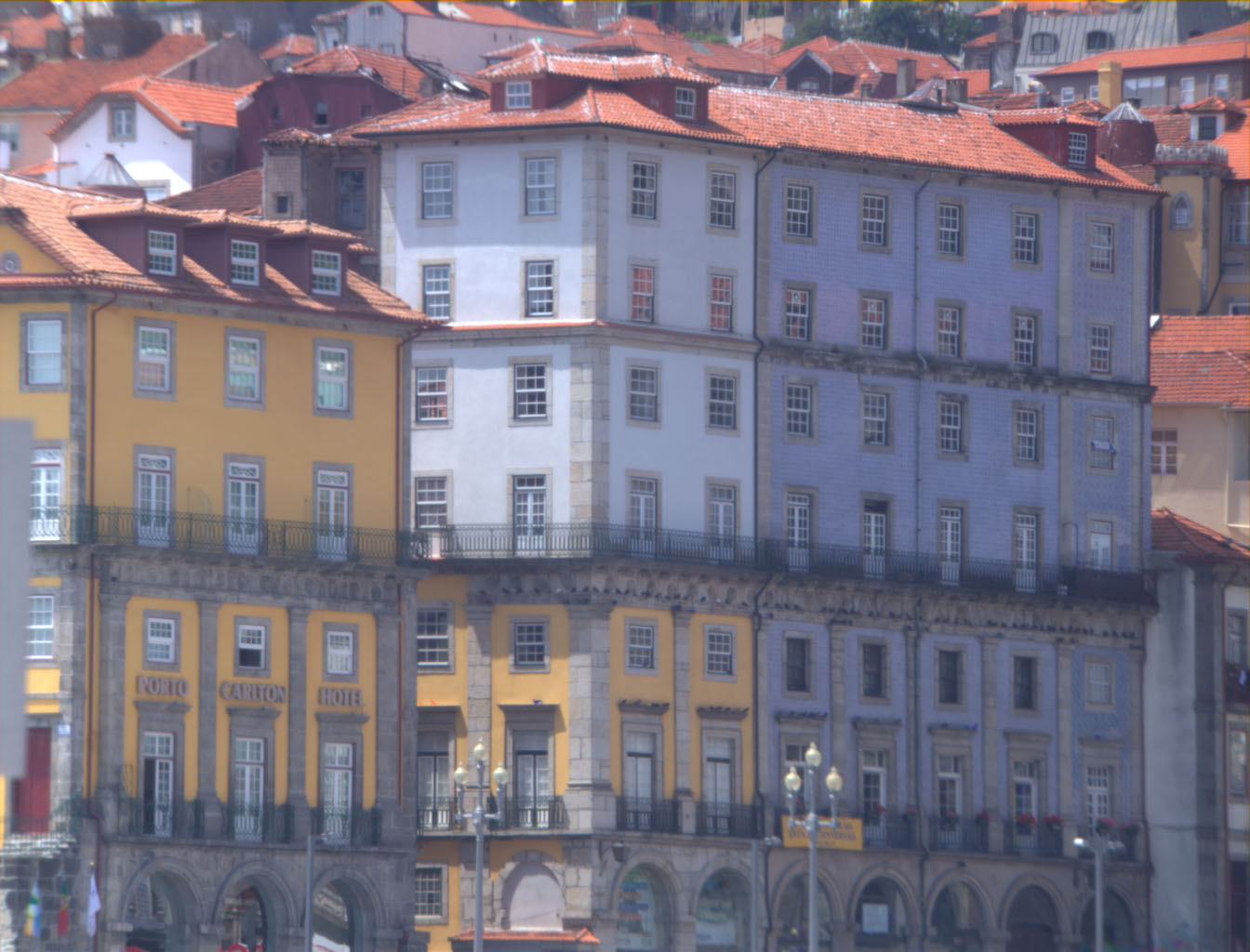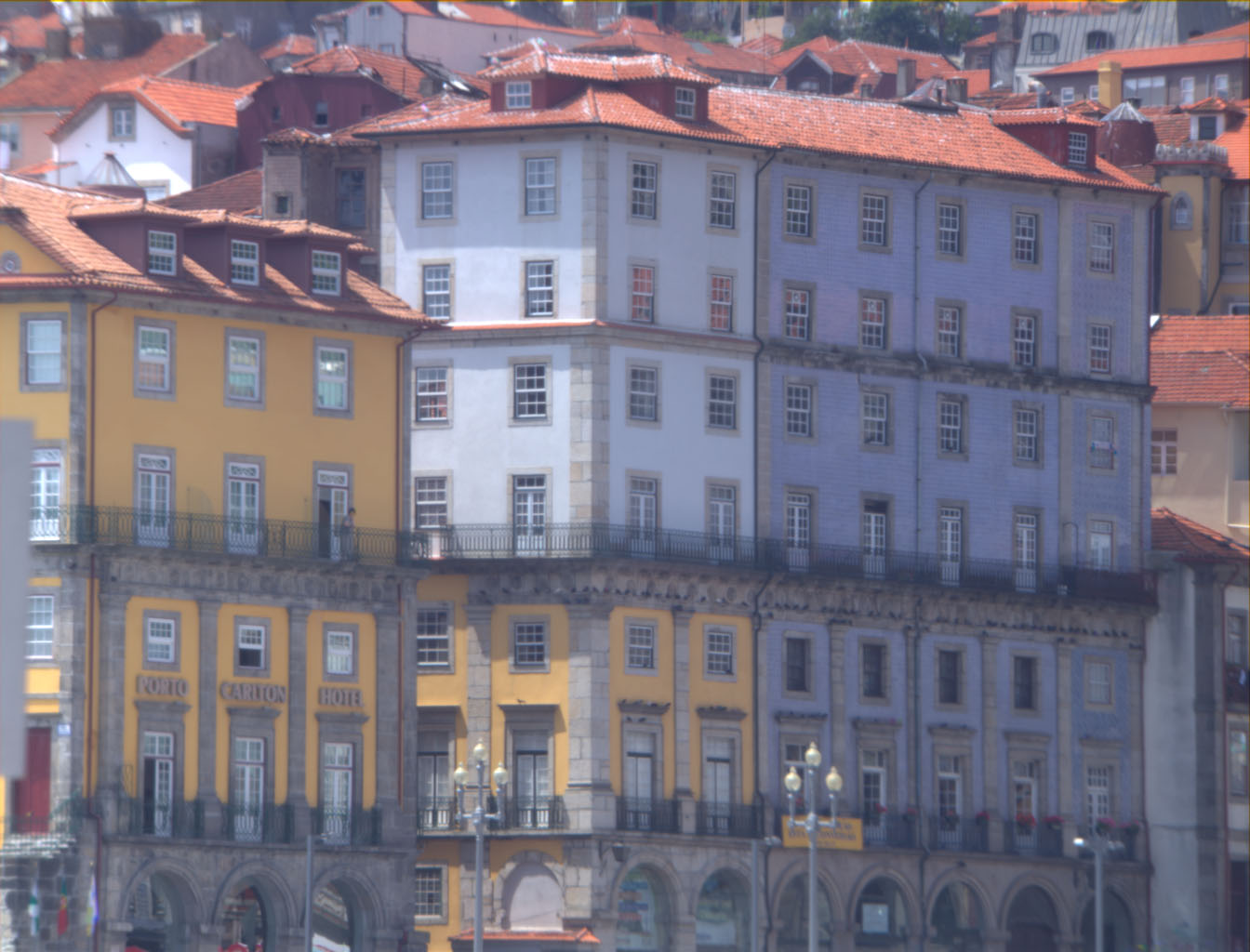Short-Interval Hyperspectral Radiance Image Pairs
1. Scenes
This data collection contains pairs of successive hyperspectral radiance images of 18 natural scenes. The members of each pair are separated by intervals of about one to fifteen minutes.
These radiance data were used here to estimate the effects of small changes in environmental daylight on the light reflected from scenes.This image shows one pair with an interval between radiance images of about 2 minutes:
 |
 |
| Ribeira Hotel 1503 | Ribeira Hotel 1505 |
2. Data
The collection of image pairs is
available at https://doi.org/10.6084/m9.figshare.c.5240420.
Each image is stored in a separate dataset labelled by scene name, approximate acquisition time, and image type, e.g. for the scene "Ribeira Hotel", the datasets are “Ribeira Hotel 1503 - Hyperspectral Radiance Image” and “Ribeira Hotel 1505 - Hyperspectral Radiance Image”. The time difference for this pair is therefore 2 minutes.
Each dataset contains a zipped file,
e.g. “Ribeiro_Hotel_1503.zip”,
and a
separate JPG image of the scene, which is for illustration only and the
same for “Ribeiro_Hotel_1505.zip”.
Pairs of images, e.g. “Ribeiro_Hotel_1503.mat” and “Ribeiro_Hotel_1505.mat”, were
registered over acquisition time by translation to compensate for
residual differences in optical image position.
The hyperspectral images were acquired by Sérgio Nascimento, Kinjiro
Amano, and David Foster from the Minho region of Portugal in 2002 and
2003.
3. Citing
These data are for personal use only. If you use the hyperspectral
radiance images or the colour images rendered from them in any
published work
arising from these data, please cite the data source at
https://doi.org/10.6084/m9.figshare.c.5240420.v1 and accompanying
publication Foster, D. H. (2021)
Fluctuating environmental light limits number of surfaces visually
recognizable by colour. Scientific
Reports, 11, 2102. DOI: 10.1038/s41598-020-80591-9